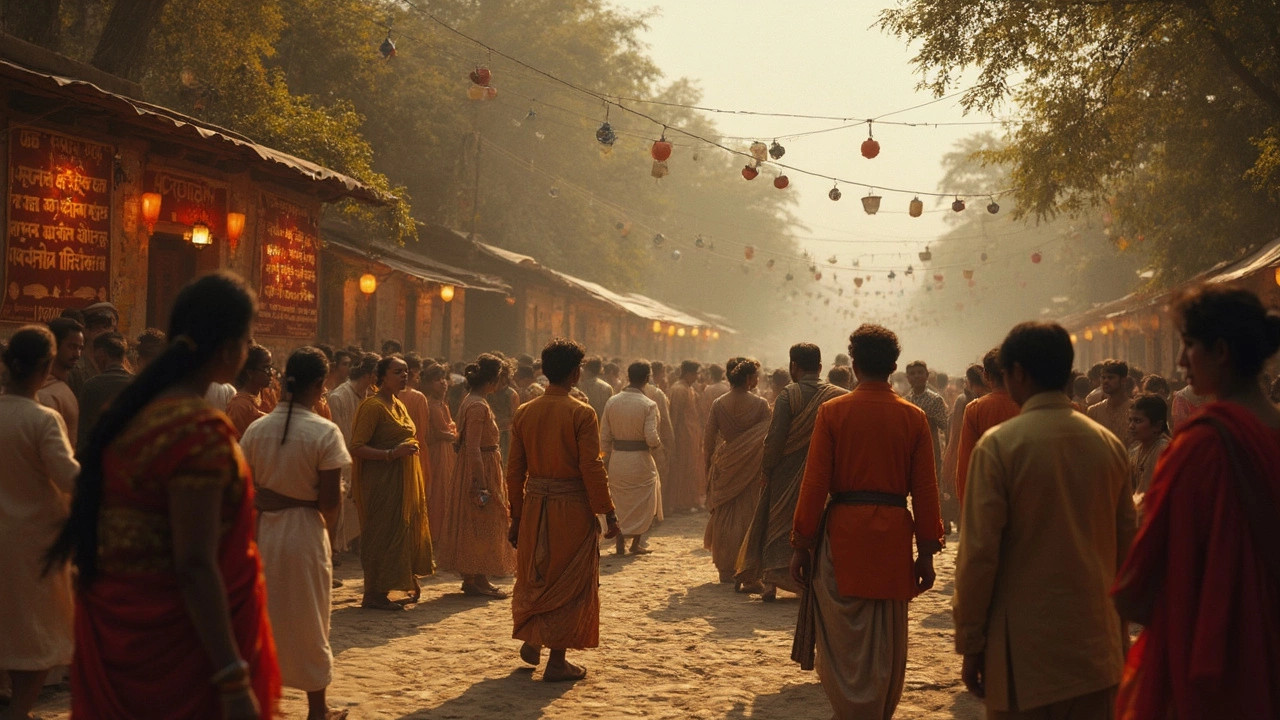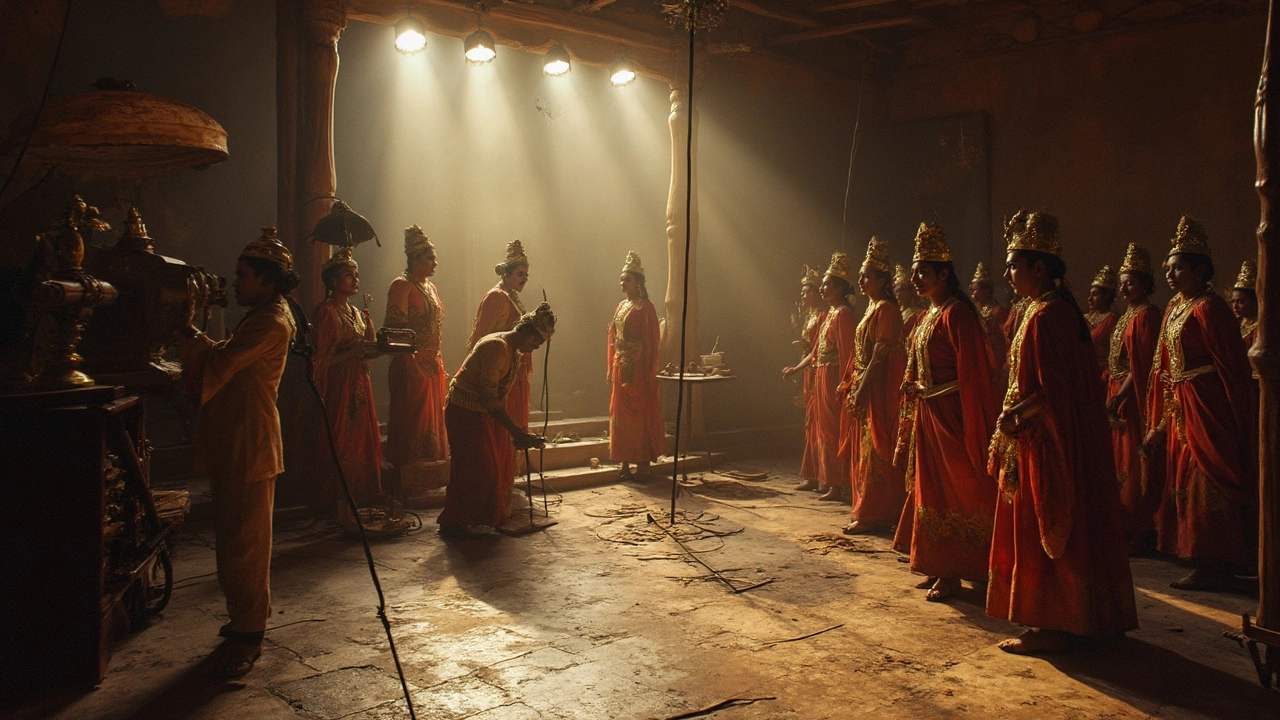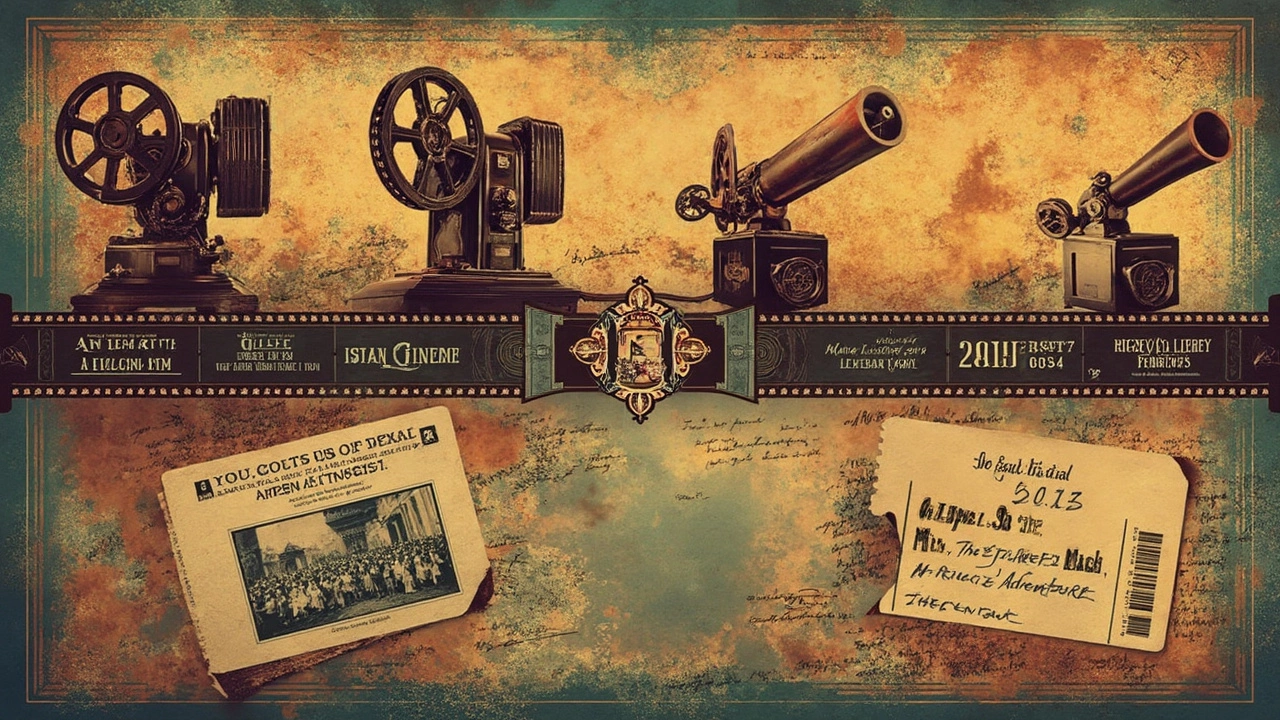Indian Cinema Start: The Origins and Early Days Explained
 Jun, 21 2025
Jun, 21 2025
The story of Indian cinema doesn’t start with color and songs—it kicks off with black-and-white frames and some gutsy filmmakers. Way back in the late 1800s and early 1900s, moving images were still a fresh idea for most people in India. But it didn’t take long for the magic to spread. The first public screening in India happened in July 1896 when the Lumière Brothers’ films played at the Watson Hotel in Bombay (now Mumbai). That’s right—movies were barely a thing in Europe before India got a taste.
If you’re hunting for the exact moment Indian cinema was born, you’ve got to check out 1913. Dadasaheb Phalke, often called the father of Indian cinema, released 'Raja Harishchandra' that year. This silent film wasn’t just a technical achievement—it pretty much created an entire industry out of nothing. With just one camera and hardly any crew, Phalke built sets in his own house, faced actors dropping out, and hunted for anyone brave enough to play female roles (since women acting was a huge no-no back then!).
- Early Glimpses: Cinema Comes to India
- The First Indian Film: Raja Harishchandra
- Trailblazers and the Birth of Bollywood
- Growth, Sound, and the Expansion Era
- Legacy and Tips for Exploring Early Indian Films
Early Glimpses: Cinema Comes to India
India saw its first ever movie screening on July 7, 1896. This wasn’t a local production yet, but the famous Lumière Brothers from France brought their short films to the Watson Hotel in Bombay. The audience had no idea what to expect—moving pictures that told stories without a single actor in sight. Tickets sold out fast, and word spread like wildfire. Suddenly, everyone wanted to see "cinematograph" shows.
Everybody was hooked almost overnight. A few months after that first screening, local photographers and entrepreneurs tried their hand at shooting little movies of their own—everyday scenes, busy markets, or funny moments they thought would make people laugh. People like Harishchandra Sakharam Bhatavdekar, known as Save Dada, grabbed cameras and shot actual events like the return of a wrestling champion to Bombay. These weren’t blockbusters, but they got people talking about the possibilities of film.
Movies quickly became a novelty in Indian cities. Makeshift theaters popped up at fairs, in tents, in halls—wherever a projector and a crowd could fit. This mad rush for screenings showed there was real hunger for stories told on screen, even if they were silent and barely a few minutes long.
"The response of the Bombay audience was enthusiastic and overwhelming. Never before had moving images caused such amazement," writes film historian Ashish Rajadhyaksha.
This early demand laid the groundwork for Indian cinema history. The country wasn’t making full-length movies yet, but it was clear: people wanted to watch, and a few pioneers were already thinking about how to make something homegrown. These first years set off a creative chain reaction that would lead to one of the world’s most energetic film industries.
The First Indian Film: Raja Harishchandra
When people talk about the roots of Indian cinema history, "Raja Harishchandra" always comes up. Made in 1913 by Dadasaheb Phalke, this was India’s very first full-length movie. And get this—it was 40 minutes long, which back then felt like a total marathon compared to the shorts people were used to.
Phalke picked the story from Indian mythology—a king known for his honesty and sacrifices. He didn’t just direct the film. He did everything: writing, producing, editing, and even working on the sets. Pretty wild for one guy!
One of the craziest hurdles? Finding actors. Social rules back then meant women wouldn’t act, so Phalke had to hire men for the female roles. Durgabai Kamat finally broke the barrier later, but not for this first film. Even the film’s shooting was basic: homemade sets, daylight as lighting, and a borrowed camera. Phalke even taught his crew everything from scratch—there was nobody in India with film experience.
Here’s some quick data on "Raja Harishchandra":
| Fact | Detail |
|---|---|
| Release Year | 1913 |
| Length | ~40 minutes |
| Language | Silent (Intertitles in Marathi and English) |
| Director/Producer | Dadasaheb Phalke |
| Main Actor | Dattatraya Damodar Dabke (King Harishchandra) |
| Budget | About ₹15,000 (big money back then!) |
| Film Type | Black-and-white, silent |
"Raja Harishchandra" was first shown at Coronation Cinema in Bombay in May 1913. Tickets sold out. The crowd loved it, and the buzz pushed others to start making films too. If you want to spot it today, just know that most of the original prints are lost. Only about 10 minutes of footage survive—but those few minutes basically kicked off the entire Indian film industry.
- If you ever spot festival screenings or re-enactments, don’t miss them—they’re the closest you’ll get to the original magic.
- You can also look for documentaries about the making of "Raja Harishchandra," which sometimes use surviving scenes.
- The Dadasaheb Phalke Award, India’s top film honor, was named after this filmmaking legend. Keep an eye out during Indian film award season to catch mentions of him and his legacy.

Trailblazers and the Birth of Bollywood
If you’re talking about game-changers, Dadasaheb Phalke was no less than a pioneer—or you could say a one-man army. After the buzz around ‘Raja Harishchandra’, others jumped in, each putting a new spin on the idea of storytelling through film. Back then, there was no playbook to follow. The entire idea of Indian cinema history was being written as they went along.
Soon after Phalke set things off, folks like R. Nataraja Mudaliar in South India and J.F. Madan in Calcutta (Kolkata) set up their own studios. These early studios ran on tight budgets, recycled sets, and played around with both mythological and social themes. It wasn’t just about entertainment—the first wave of filmmakers wanted to capture Indian stories that felt familiar to local audiences, not just copies of Western movies.
There’s another fun fact: it took until 1917 for an Indian film to feature a female actor—Durgabai Kamat. Before her, men played all the women’s parts because acting was thought of as off-limits for women. That slowly changed as film grew more popular and people got used to seeing actresses on the screen.
By the 1920s, Indian filmmakers were setting up bigger studios like Bombay Talkies and Prabhat Film Company. These studios built the foundation for what we’d later call “Bollywood.” Creative directors like Himanshu Rai and Devika Rani started making movies that moved beyond mythology, trying romance and real-life issues in their stories. Once sound arrived in Indian films in the 1930s (with ‘Alam Ara’ in 1931), the industry exploded, making singing and drama a signature part of Bollywood’s personality.
Just to sum up the main moves these early trailblazers made:
- They built local studios from scratch, with no outside help.
- They pushed for Indian stories, not just remakes of foreign films.
- They broke social barriers, including getting the first women on screen.
- They experimented with sound, music, and dance to create something unique.
These early risk-takers laid everything on the line, and that’s how the industry millions of people love today actually got going. Next time you watch an old song-and-dance number, it’s worth remembering how much groundwork was needed to make it all possible.
Growth, Sound, and the Expansion Era
After the quiet hustle of the silent film days, things started changing fast for Indian cinema. The big shake-up was all about sound. The first Indian talkie, 'Alam Ara,' hit theaters in 1931. Directed by Ardeshir Irani, this movie was a total game changer. For the first time, people could hear actors speak, sing, even argue. Folks lined up for hours to experience it. If you read about Indian cinema history, 'Alam Ara' always gets a mention because it kicked off the whole era of songs and dialogues that Bollywood is famous for now.
Other regions jumped on the bandwagon too. In the same year, 1931, the first Bengali talkie, 'Jamai Shashthi,' and the first Tamil talkie, 'Kalidas,' also came out. Indian cinema suddenly wasn’t just a Bombay thing anymore. Every major region started making their own movies, setting the scene for language-based industries (like Tollywood and Kollywood) that are huge today.
By the 1940s, movie studios popped up around major cities, and film production was getting more organized. The number of films made each year shot up. The first color film, 'Kisan Kanya,' showed up in 1937, and while it didn’t have the impact of sound, it showed that Indian filmmakers were ready to try new tech.
So how did all this growth help? For one, it meant more jobs—actors, musicians, technicians, and a whole lot of others started working in the industry. It also meant more stories got told, from mythological tales to social dramas. Film songs started popping up everywhere; you’d hear them in taxis, cafes, and homes across cities and towns. By the time the 1950s rolled around, Indian movies weren’t just a side gig—they were shaping how people dressed, spoke, and saw the world.

Legacy and Tips for Exploring Early Indian Films
The first movies in India set the tone for something massive. The legacy of those silent-era films is still noticeable today. Without the DIY spirit of pioneers like Dadasaheb Phalke, it’s hard to imagine the shape of Indian cinema history as we know it. Even big stars and directors today tip their hats to these old-timers, knowing they paved the way when there was zero tech or real support.
Most early films weren’t preserved, so seeing them now is almost impossible. 'Raja Harishchandra' only has a few surviving reels, and a lot of silent films from the 1910s and 1920s are lost forever, mainly because film reels were made of flammable material and storage was shaky at best. Still, the few you can watch or read about give a raw, unfiltered sense of India’s past—and watching them isn’t just about the story, it’s about seeing who we were as a country when movies first arrived.
If you want to dig into these early Indian films, here are some tips to get started:
- Check out the National Film Archive of India (NFAI). They store what’s left of the old classics and sometimes do special public screenings and online videos.
- Look for documentaries about Phalke and other silent filmmakers, like the film 'Harishchandrachi Factory' (2009). It covers how India’s first feature film was made—warts, mishaps, and all.
- Visit museums or festivals focused on film. Mumbai’s Film Heritage Foundation and the International Film Festival of India (IFFI) often showcase lost classics, restored footage, or curated retrospectives.
- The internet is your friend: YouTube has restored versions, and some universities upload old Indian shorts and documentaries.
- Read books or trusted blogs that analyze early Indian filmmaking—there’s lots of cool trivia about how actors, who weren’t even trained, faked epic battle scenes with string, drums, and pure imagination.
Here’s a quick look at some basic facts about Indian cinema’s silent era:
| Milestone | Date | Details |
|---|---|---|
| First Public Screening in India | July 7, 1896 | Six short films by Lumière Brothers at Watson Hotel, Bombay |
| First Indian Feature Film | May 3, 1913 | 'Raja Harishchandra' by Dadasaheb Phalke |
| Early Preservation Vault Opened | 1964 | National Film Archive of India set up in Pune |
Getting your hands on these films is tricky, but it’s doable—and totally worth it if you want to see where the Bollywood juggernaut actually started.